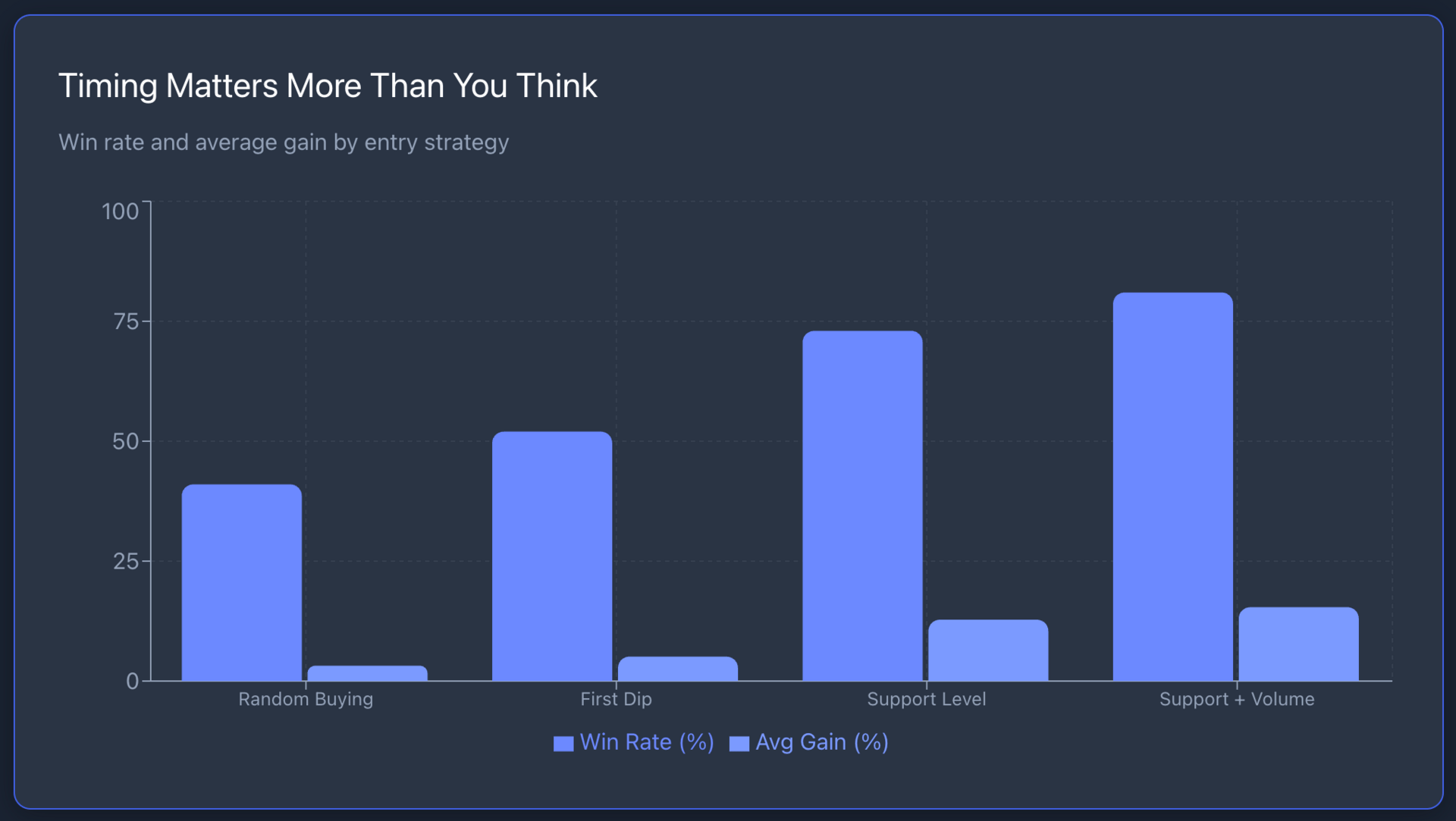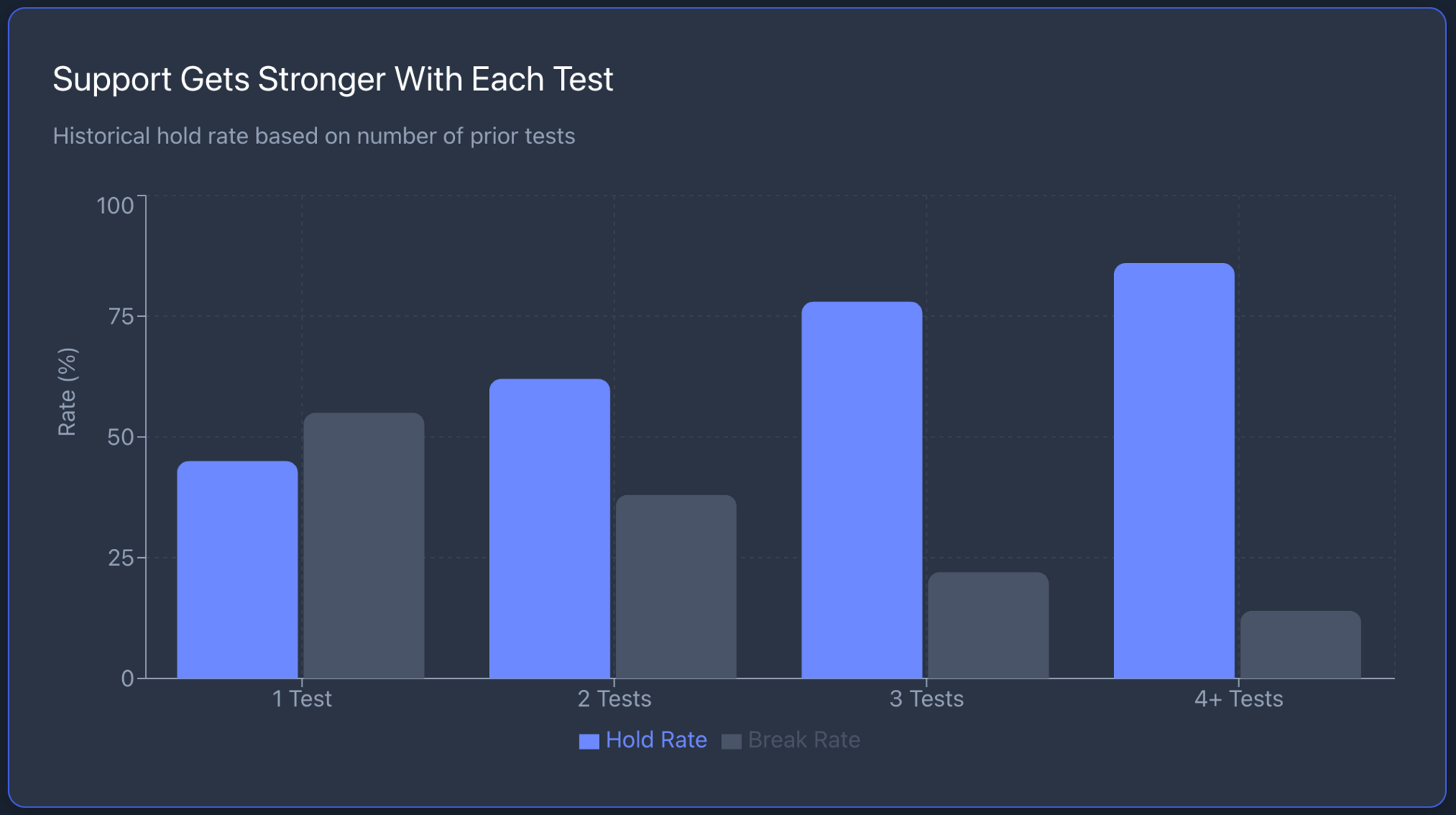Most investors lose money trying to "buy the dip" because they're guessing at entry points instead of analyzing them.
Every market pullback looks like an opportunity until it turns into a 20% drawdown. The difference between catching a bargain and catching a falling knife comes down to one skill—reading support levels.
“Buy the Dip” Timing

Buying the dip works. But only when you know where the dip ends.
Most investors see a 5% decline and jump in. The stock drops another 10%. They bought momentum, not value. They mistook a downtrend for standard volatility.
A dip is a temporary pullback in an upward trend. A downtrend is a structural shift lower. One bounces back quickly. The other erodes capital for months.
Without a framework, you're gambling on timing. With support levels, you're analyzing probability.
Support Levels

Support levels are price floors where buying pressure historically outweighs selling pressure.
These aren't random numbers. They're proven zones where demand has absorbed supply before.
Here's what we know: Markets have memory. Prices that held once tend to hold again. Not always, but often enough to shift odds in your favor.
Pull up a six-month chart. Look for horizontal zones where price bounced multiple times. That's your first support level.
The more times price is tested and held, the stronger the support.
Next, check volume. High volume at a support level means real buyers stepped in. Low volume bounces are fragile.
You want confirmation that institutional money entered, not just retail speculation.
Support isn't a single price point. It's a zone, usually spanning 2-3% around a key level.
Set your entry near the bottom of that zone, not at the first sign of decline.

Join Derek Jeter and Adam Levine
They’re both investors in AMASS Brands Group. You can join them and get up to 23% bonus stock. But only if you invest by Thursday, Dec. 4.
Why invest? They’re growing fast. Their brands cover everything from organic wine to protein seltzers. So with consumers seeking healthier options in the $900B beverage market, it’s no surprise AMASS has made over $80M to date, including 1,000% year-over-year growth.
They have even more ambitious plans for the future too. They’ve reserved the Nasdaq ticker $AMSS, enlisted a major investment bank to fuel their growth, and plan to 3X their retail footprint by 2028.
But your chance to amplify your investment with bonus stock ends soon. Become an AMASS Brands Group shareholder and secure your bonus stock by Dec. 4.
This is a paid advertisement for AMASS’s Regulation CF offering. Please read the offering circular at https://invest.amassbrands.com
Price Alerts

This is where discipline separates performance from loss.
Open your brokerage platform. Set a price alert at your identified support level. Not a market order. Not a limit buy. Just an alert.
When price hits that level, evaluate again. Is volume increasing? Are other technical indicators confirming support? Is the broader market stable or deteriorating?
If conditions check out, then you buy. If not, you wait for the next support level down.
The advantage is clear: You remove emotion from the equation.
No panic buying during a selloff. No FOMO when everyone else is piling in. Just data-driven entries at predetermined levels.
Support analysis won't catch every bottom. But it will keep you from buying tops disguised as dips.
What's catching investor attention today: Inside NVIDIA's $57 Billion Quarter: Why Insiders Are Selling While Retail Doubles Down
Disclaimer: This is not financial or investment advice. Do your own research and consult a qualified financial advisor before investing.




